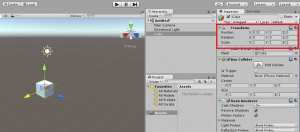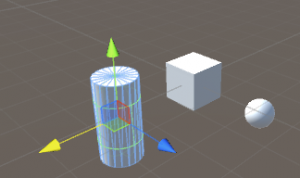easy to color, shade, texture as well
assigning materials
what is a Material inside of Unity?
A shader and its associated settings
Textures
famous person in computer graphics
Ivan Sutherland, Edwin Catmull, Bui Tuong Phong
project pane -> Assets -> Create -> Shader -> Standard surface shader
HLSL
Shader "Custom/NewSurfaceShader" {
Properties {
_Color ("Color", Color) = (1,1,1,1)
_MainTex ("Albedo (RGB)", 2D) = "white" {}
_Glossiness ("Smoothness", Range(0,1)) = 0.5
_Metallic ("Metallic", Range(0,1)) = 0.0
}
SubShader {
Tags { "RenderType"="Opaque" }
LOD 200
CGPROGRAM
// Physically based Standard lighting model, and enable shadows on all light types
#pragma surface surf Standard fullforwardshadows
// Use shader model 3.0 target, to get nicer looking lighting
#pragma target 3.0
sampler2D _MainTex;
struct Input {
float2 uv_MainTex;
};
half _Glossiness;
half _Metallic;
fixed4 _Color;
void surf (Input IN, inout SurfaceOutputStandard o) {
// Albedo comes from a texture tinted by color
fixed4 c = tex2D (_MainTex, IN.uv_MainTex) * _Color;
o.Albedo = c.rgb;
// Metallic and smoothness come from slider variables
o.Metallic = _Metallic;
o.Smoothness = _Glossiness;
o.Alpha = c.a;
}
ENDCG
}
FallBack "Diffuse"
}
Unity’s Standard Shader attempts to light objects in a “physically-accurate” way. This technique is called Physically-Based Rendering or PBR for short. Instead of defining how an object looks in one lighting environment, you specify the properties of the object (e.g. how metal or plastic it is)
implement head lotation
using UnityEngine;
using System.Collections;
public class HeadRotation : MonoBehaviour {
void Start(){
Input.gyro.enabled = true;
}
void Update(){
Quaternion att = Input.gyro.attitude;
att = Quaternion.Euler(90f, 0f, 0f) * new Quaternion(att.x, att.y, -att.z, -att.w);
transform.rotation = att;
}
}



